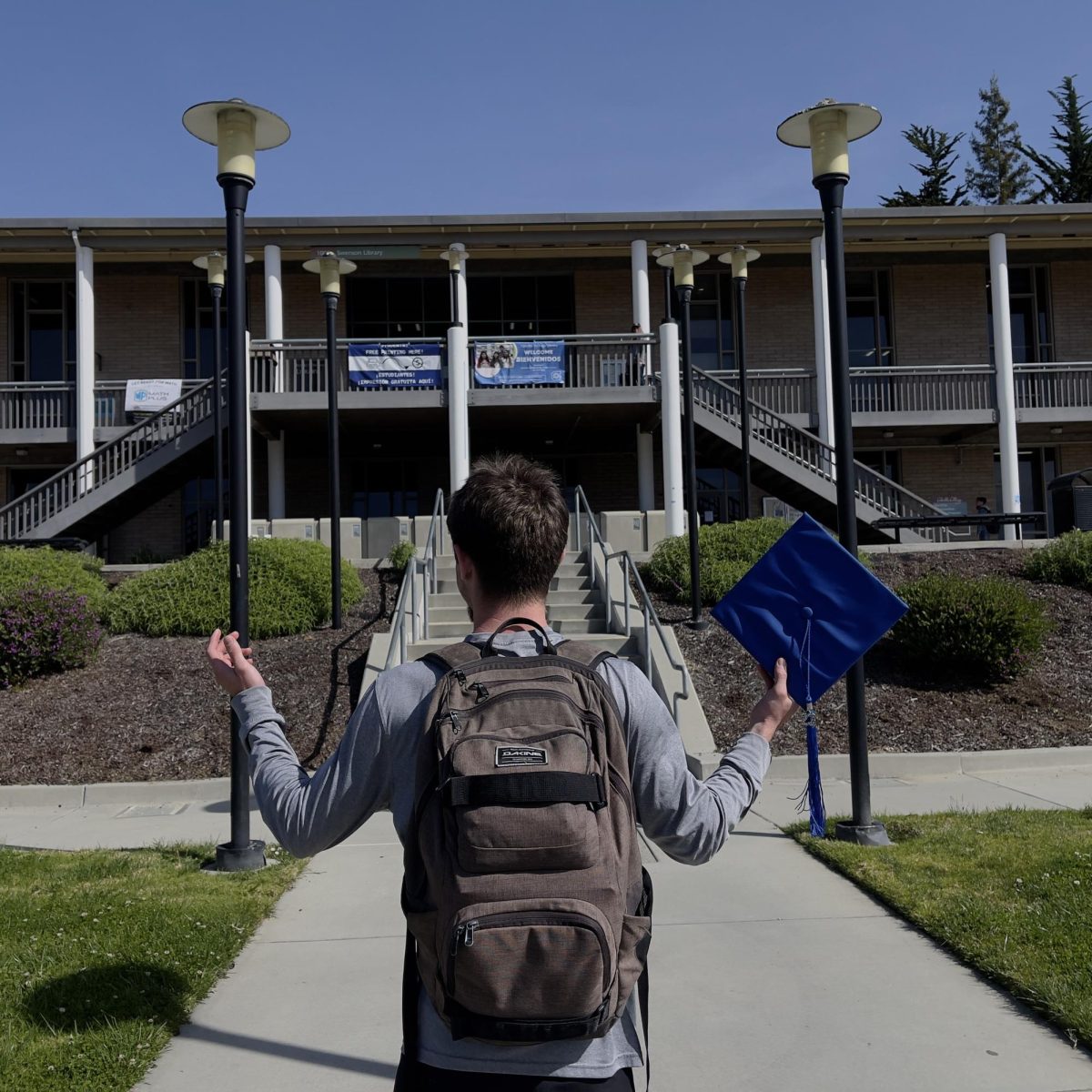Grass sprouts up between missing tracks. The red and white mechanical arms of rail traffic crossings grow stiff from lack of use. Sleeping bags, backpacks and trash build up along the sides of the rails. Abandonment is not the best use for the Santa Cruz Branch Rail Line.
Parts of the 32-mile long line, stretching from Pajaro Junction to Davenport, haven’t been used since last year’s heavy rainfall, according to Cory Caletti, Senior Transportation Planner/Rail Trail Program Manager of the Regional Transportation Commission (RTC). Caletti said other parts are used for minimal freight service in South County.
The RTC is currently doing a Unified Corridor Investment Study to decide the best outcome for the rail line. The two options the RTC is studying are: a rail-with-trail system, in which there would be a walking and biking trail and passenger rail service throughout the county, or a trail-only. The trail only option is the better choice for the Santa Cruz Branch Rail Line. The trail is a better choice in terms of cost, best use of space, and promotion of well being.
Greenway, formerly known as the Great Santa Cruz Trail Group, is spearheading the trail only initiative. In a process known as railbanking, Greenway wants to expand the walking path by paving over the rails themselves. Through this process, the rails are preserved if they need to be used for train service in the future. Ultimately, Greenway hopes to transform the path so that cyclists, walkers, runners and other pedestrians can actively use the trail.
In terms of cost, the trail only option is less expensive. According to a 2016 study conducted by the transportation firm Nelson/Nygaard on a trail only option, the trail would cost $1.6 million per mile and the rail with trail would cost $4 million. In total, the study estimates that construction will cost $70 million. The study shows that funding options include: the Transportation Alternatives Program (TAP), the Recreational Trails Program, the Congestion Mitigation and Air Quality Improvement (CMAQ) Program, the Surface Transportation Program, Transportation Investment Generating Economic Recovery (TIGER) grants, Community Prevention grants and the Transportation Infrastructure Financing and Innovation Act (TIFIA).
Caletti said, “the 32-mile trail portion of the rail-with-trail project is anticipated to cost roughly $130 million.”
According to the Coastal Rail Trail Fact Sheet for Summer/Fall 2017, “approximately $40 million has been secured to build current projects and advance future projects, of which $24 million is from grants and private donations and $16 million is from Measure D. Measure D is the voter approved sales tax measure that will allocate approximately $85 million for the trail over 30 years.”
Gail McNulty of Greenway said that the funding from Proposition 116 has already been spent. According to Santa Cruz County Friends of the Rail Trail, Proposition 116 was voted on by Santa Cruz County residents to gain public ownership of the rail line.
In terms of use of space, more can be done with the current available area of the rail and trail.
The rail corridor at Encinal Drive
In order to install a passenger rail service alongside the existing path, there needs to be a barrier built between the two. This barrier will protect people on the path from potentially getting hit by the train. Currently, there is not enough space to build this wall and expand the path, so trees would need to be cut down to clear the land. Deforestation would harm the environment and destroy some animals’ habitats. The number of trees that would need to be cut down is unknown.
With a trail only plan, zero trees would need to be removed.
A trail is also better for the environment because no fossil fuels or other harmful materials are being used to power a train. In turn, the bicycles that would be used on the trail would not be hazardous to the environment.
In terms of well being, the trail only option promotes a healthier lifestyle for county residents. People can bike, run, walk, roller blade and more on the trail, while passengers would only be sitting on a train. The trail also encourages time spent outdoors, which can affect a person’s mood and state of happiness. Furthermore, conversation on a train versus a trail is a moot point. One may think conversation is easier to have while sitting in an enclosed space, but people can talk just as easily while walking or traveling together on foot.
While trail users would need to allow more time to reach their destination than on a train, the passenger rail could also experience unexpected delays or mechanical problems.
Decisions The RTC and county residents are on track to make a decision on the outcome of the rail line. “Four rail trail projects, totaling thirteen miles, are currently moving forward,” Caletti said. “Construction will break ground on the City of Santa Cruz segment this upcoming summer or fall.”
According to the Santa Cruz County Regional Transportation Commission (SCCRTC), the RTC has prepared a Master Plan for the rail with trail. This plan divides the trail into 20 segments that can be built as funding becomes available.
Neither the trail-only or rail-with-trail are completely fault proof, but the benefits of the trail only outweigh those of the passenger rail. Now residents must decide if they want a footpath or a rail for passenger service.







